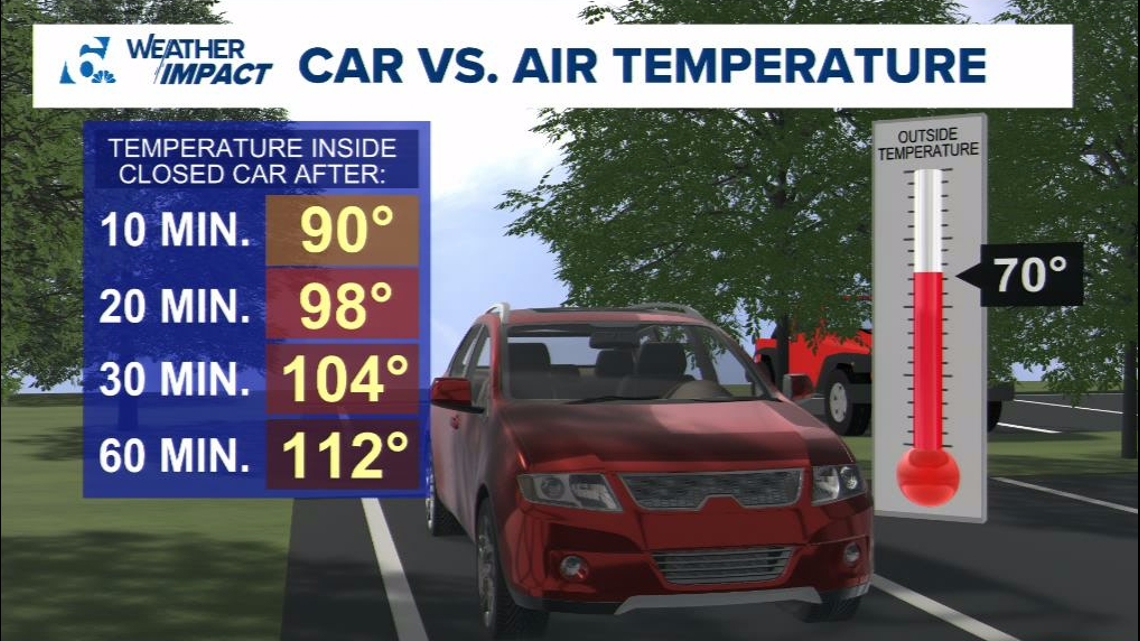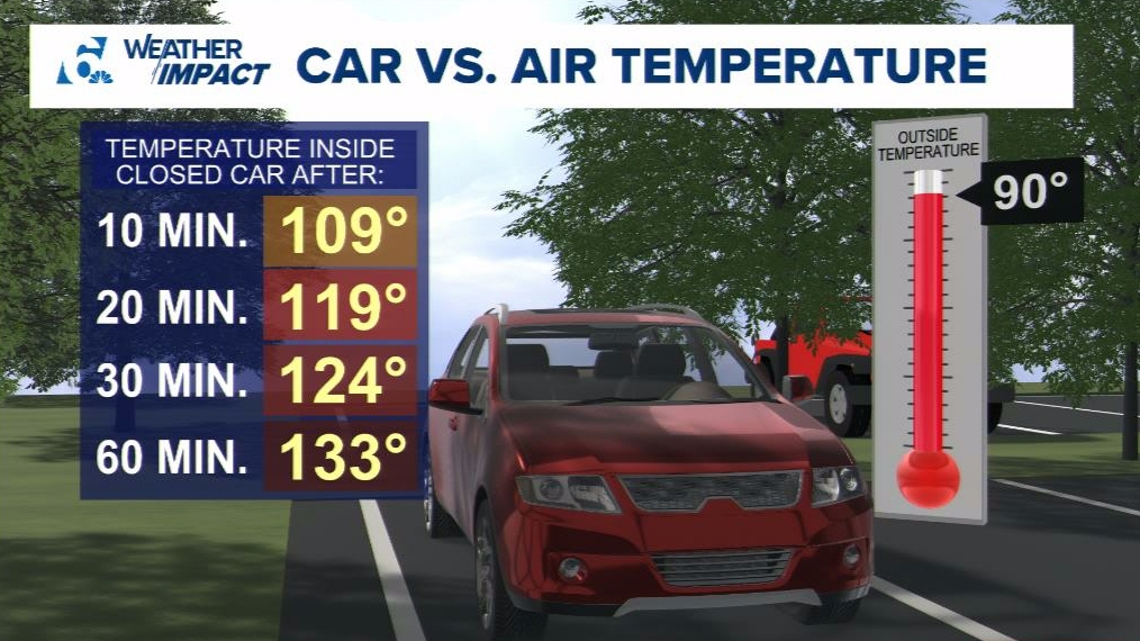TEMPLE, Texas — According to the National Safety Council (NSC) 29 children died as a result of vehicular heat stroke in 2023. As of July 10, nine children have been lost in 2024. The NSC says an average of 37 children die each year due to being left in a hot car.
So, why is it so dangerous for a child to be left alone in a car? For that, we’ll need a quick lesson on Radiational Physics:
The sun transmits radiation at all wavelengths along the Electromagnetic Spectrum. This includes visible light, low energy infrared radiation (what we experience as heat) and very high energy ultraviolet radiation. These UV rays are what cause suntans and sunburns in humans.
UV rays are also strong enough to penetrate the windows on your car (yes, even if you have tint on the windows). This radiation is so strong that it will keep moving through the car until it comes into contact with an opaque surface, such as your dashboard, steering wheel, armrest and seats.
These surfaces absorb this radiation and begin heating up. As they heat up, they re-release that radiation as low-energy infrared radiation, or heat.
These rays do NOT have enough energy to penetrate your windows and the heat gets trapped in the car. The longer the car sits, the more energy gets trapped and the hotter your car gets. This miniaturized version of the "Greenhouse Effect" can make the inside of your vehicle significantly hotter than the outside air.
How hot?
Let’s start with a relatively mild 70° Day. After 10 minutes, the inside can reach 90°. After 30 minutes, we’re up over 100° and after an hour, the inside can reach 112°.


Let’s fast forward to a more common Texas summer day. If the air temperature is 90° outside, the inside of your car can reach 109°. After 30 minutes, we’re up to a sweltering 124°, and if left alone for an hour, the inside of your car can reach an incredibly dangerous 133°.


At these temperatures, it does not take long for heat stroke to set in. According to the National Highway Traffic Safety Administration (NHTSA) a child’s core body temperature can rise 3- to- 5 times faster than that of an adult. Heat stroke sets in when the core temperature of the body reaches 104°, and death can occur once the core temperature reaches 107°.
So, how can you help?
The first and most obvious way is to always make sure everyone exits the vehicle. Double check the backseat before running into the store or the office and take everyone with you, even if it's only a short visit. It can take only moments for tragedy to strike.
Additionally, if you witness a child in an idle car, attempt to locate their parents. If that child appears unresponsive, attempt to get into the vehicle (even if that means breaking a window) and call 911. According to NHTSA, many states (including Texas) have a Good Samaritan law, protecting people from prosecution for destroying property in an effort to protect a life.

